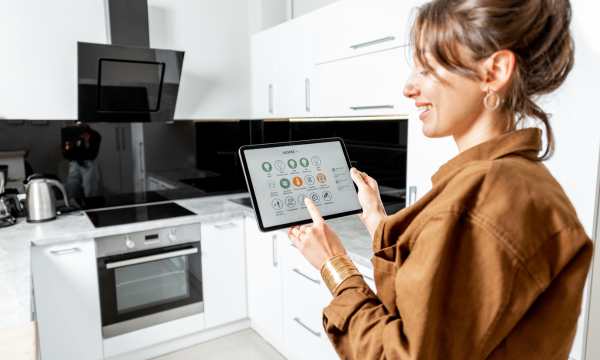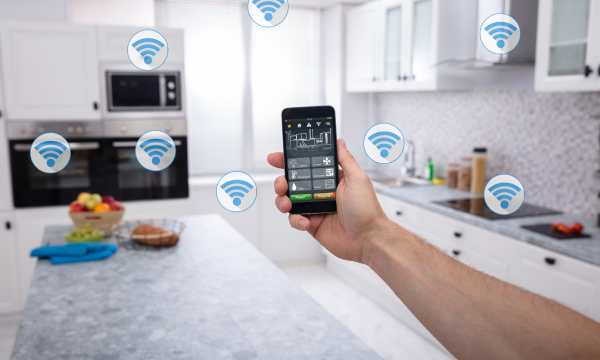Illuminating Brilliance: Guide to Smart Lighting
Better, more adaptable ways to light your home have taken the place of traditional light switches and lamps.
Ad
Smart lighting systems not only come with a remote control, but also have many other features that can change the atmosphere of any room. This guide takes an in-depth look at smart lighting, highlighting the pros and cons and things to consider so you can illuminate your home beautifully and efficiently.
How Smart Lighting Works: It’s not just ‘On’ and ‘Off’
It is not enough to just use a smart lighting system to turn the lights on and off. These systems use advanced technology to give you a wide range of options, such as changing color, reducing brightness and creating your own lighting scenes. You can control smart lighting remotely via voice commands or an app on your smartphone. It can also connect to other smart home systems for seamless automation.
Ad
Smart Lamps Make Smart Lighting Possible:
Smart lamps ensure that smart lighting works. When these lights are connected to your home Wi-Fi network, you can control them via an app on your phone or computer. There are many types of smart lamps, such as smart lamps that can change color, smart lamps that can be dimmed and smart lamps that can change the color temperature. These smart light sources can easily be added to existing fixtures, turning regular lamps or high beams into smart light sources in an instant.
Realize Smart Transformation through Smart Switches and Dimmers:
Smart switches and dimmers are ideal for people who want to keep their old light sources but still enjoy the benefits of smart lighting. These gadgets replace regular light switches and offer smart functionality. They can be handled manually, using an app on your phone, or with a voice-activated assistant such as Google Assistant or Amazon Alexa. Smart switches and dimmers allow you to retrofit intelligence into your home lighting system.
White Light that Changes Color and Creates Atmosphere:
The ability to change color and color temperature is one of the best features of smart bulbs. Color-changing bulbs are available in different shades, so you can create a bright lighting fixture for a special event or just to feel better. With adjustable white light, on the other hand, you can change the warm or cool color of the light so that it resembles natural sunlight or creates a cozy, warm atmosphere in the evening. These features give you more freedom than ever before to create the right lighting for every situation.
Smart Lighting Scenes and Automation: Effortless Ambiance
Smart lighting scenes allow people to set and control multiple lights at the same time to create different atmospheres. For example, a movie night scene might slowly dim the living room lights to a comfortable level, while a “morning wake-up” scene might slowly brighten the bedroom lights to resemble a sunrise. Automation goes one step further and allows lights to respond to external factors such as the time of day, the presence of people and even the weather. These features allow you to add a touch of sophistication and convenience to your home.
Voice Control: Illuminating with a Word
There’s a voice-activated assistant built into smart lighting, and turning the lights on and off is as easy as saying a word. Voice prompts can be used to turn lights on and off, change colors and adjust brightness on platforms such as Amazon Alexa, Google Assistant and Apple HomeKit. This hands-free operation not only makes it easier, but also gives your home a modern look.
Smart Ways to Save Money on Energy Consumption:
Smart lighting is not only useful and beautiful, but it also saves energy. Many smart lights and devices are built with energy-saving features in mind, such as LED technology and the ability to dim lights to the right level. Automation and scheduling can also be used to ensure that lighting is only turned on when necessary, which can help reduce energy consumption and electricity bills.
Integration and Safety: Lighting as a Safety Feature
Smart lights can be a useful part of a home security system. When connected to other smart home devices, such as motion sensors or security cameras, the lights can turn on when danger is detected. For example, outdoor lights turn on when they detect movement, deterring anyone trying to break in. This 2-in-1 feature makes your home safer and more attractive.
Things to Think About and Tips:
- Compatibility: Make sure the smart lighting you choose is compatible with the apps you want to use (such as Apple HomeKit or Google Assistant) and other smart home devices.
- Scalability: Consider how your smart lighting system can be expanded as needed. Your needs may change over time, so you may want to add more devices or features. Choose a method that is easy to add.
- Security: To protect your smart lighting system from potential cyber threats, make sure your Wi-Fi network is secure, uses strong passwords, and keeps your gadget’s firmware up to date.
- Maintenance: Make sure to regularly check for software updates for your smart lighting products to have the latest features and better security.
Conclusion:
Smart lighting is more than a simple way to control the amount of light in your home; it is also a way to make the environment of your home more vibrant and unique. Smart lighting offers you various options, whether you want to create a cozy atmosphere, make your home safer or simply enjoy simple voice control. With the right combination of lights, switches and automation, you can add modern sophistication, energy efficiency and sparkle to your living spaces. The future of smart lighting looks bright as technology continues to evolve, with new ideas offering people more ways to make their homes brighter than ever before.
FAQs:
1. What is smart lighting? How does it differ from traditional lighting systems?
Smart lighting refers to smart lighting systems that can be controlled remotely via smartphones, voice commands, or automation. Unlike traditional lighting systems, smart lighting offers features such as color-changing options, dimming options, and the ability to create custom scenes for different moods and occasions.
2. How do smart lights work? Can they be integrated into existing lighting fixtures?
Smart lights connect to a home’s Wi-Fi network, allowing users to control them through a special smartphone app. These lamps can often be integrated into existing lighting fixtures, instantly converting them into smart, controllable light sources. Smart light bulbs come in many types, including color-changing and dimmable options.
3. What are smart switches and dimmers, and how do they apply intelligence to existing lighting systems?
Smart switches and dimmers replace traditional light switches and add smart functions to existing lighting systems. They connect to Wi-Fi and can be controlled manually via a smartphone app or integrated with a voice-activated assistant. These devices provide a retrofit solution for those who want smart lighting without changing their existing fixtures.
3. How do color-changing and adjustable white lighting work, and what are the benefits of these features?
Color-changing smart bulbs allow users to adjust the colour of the light and provide a range of shades. Adjustable white light allows users to adjust the warm or cool colour of the light. These features provide the flexibility to create different atmospheres, mimic natural daylight, or enhance the aesthetics of a space, providing unparalleled versatility in lighting design.
4. Can smart lighting systems improve energy efficiency? How do they integrate with home security?
Yes, smart lighting systems can improve energy efficiency through features such as LED technology, dimming options and scheduling. Integration with home security systems allows smart lights to respond to triggers such as motion sensors or security cameras. For example, outdoor lighting can light up when motion is detected, increasing safety and energy-efficient use of lighting.
 How to Use a Truck GPS App on Android
How to Use a Truck GPS App on Android
Experience the freedom of smart routes and precise navigation with a truck GPS app on Android. Ad […]
More Innovations Unveiled: Overview of Smart Home Appliances
Innovations Unveiled: Overview of Smart Home Appliances
The rapid development of technology has changed our way of life. Ad One of the most exciting […]
More Seamless Living: Smart Home Systems Integration
Seamless Living: Smart Home Systems Integration
In today’s technologically advanced age, the concept of home living has transcended its usual limitations. Ad With […]
More